This article describes the latest beneficiation automatic control technology that sinonine has mastered.
Part1:Crushing and screening automatic control
The typical three stage and one closed crushing technology is illustrated in Figure 1, which is made up of jaw crusher, secondary cone crusher, fine cone crusher, ore bin, belt conveyor, feeder, vibrating screen and other equipments etc. This crushing process of production equipment and distribution of ore, long distance transport, manual operation can not be found abnormal and fault monitoring production timely, continuous production, poor stability, and crushing workshop dust, poor working environment, thus crushing production of high labor intensity, high risk. The main task of automation of crushing process is the centralized monitoring and automatic control of the production process.
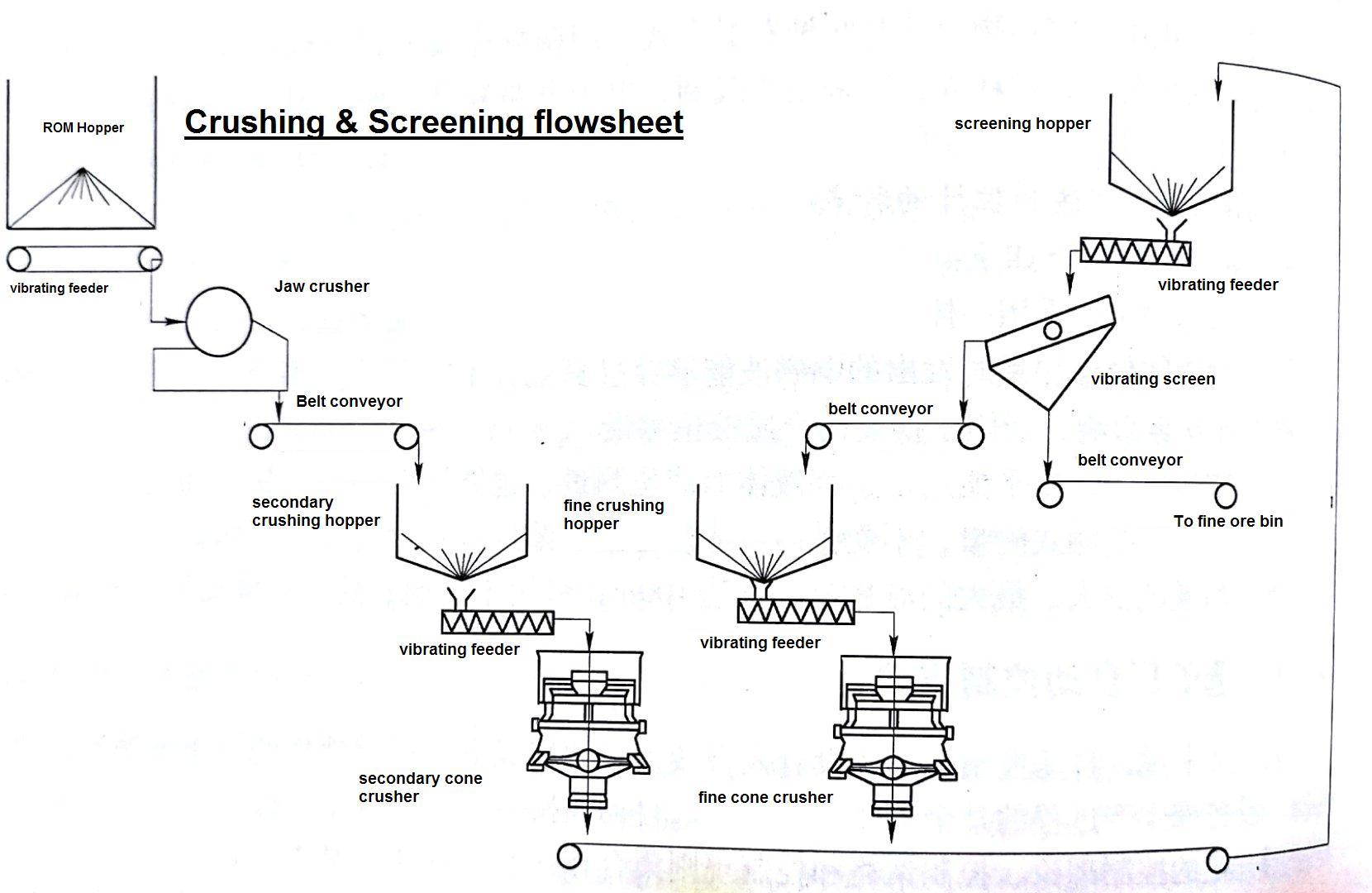
Fig1.Three stage and one closed crushing technology flowsheet
1. Automatic interlocking control for crushing and screening
Automatic interlocking control can at least replace the manual operation of the crushing production of 60%~70%. It is the most basic and most important control. Automatic interlocking control includes:
(1) Automatic start and stop interlocking control
The equipment such as crusher and belt conveyor is not allowed to start with ore. When working, it needs to start the equipment one by one in accordance with the reverse direction of ore material transportation, such as starting the belt conveyor, then the crusher and then the feeder. When parking, no ore can be left in the crusher and the belt conveyor and the ore must be sent to the silo for storage completely. Therefore, when stopping, the ore must be stopped according to the direction of material transportation, such as stopping the feeder, then stopping the crusher and then stopping the belt conveyor.
The key parameter of automatic starting interlocking is the delay time of the equipment Tst. The setting of Tst depends on the electrical startup property of the device. For example, a high-power belt conveyor often needs a soft starter to start with low voltage, and its startup delay time is at least longer than that of the soft starter.
The key parameter of automatic stop interlocking is the delay time Tsp of the equipment. The setting of the Tsp depends on the electrical parking property of the equipment and the time to complete the delivery of the ore.
(2) Interlocking control of ore hopper level
The material level of ore hopper is the key process parameter of the crushing process. All the hoppers are equipped with radar level meter to monitor the change of material level in real time, and the monitoring of material level plays an important role in production. The location value reflects whether the ore reserves in the ore bin can ensure the subsequent equipment get uniform, stable and continuous feeding, so as to ensure the efficiency and fragmentation effect of the equipment. The range of the material location reflects the buffer capacity of the hopper, and can eliminate the influence of the upstream production disturbance on the downstream, so as to ensure the normal operation of the whole crushing production.
The level interlocking control uses the upper and lower limit control, and the schematic diagram is shown as shown in Figure 2. The lower limit (HHLimit) and upper limit (LLLimit) of the material level sets a safe range of potential fluctuation for the hopper. When the material level reaches the limit, alarm is generated. The computer system adjusts the rotational speed or running state of the feeding device and or discharging device of the ore hopper according to the alarm state, and strives to make the object position return to a safe and reasonable range in the shortest time.
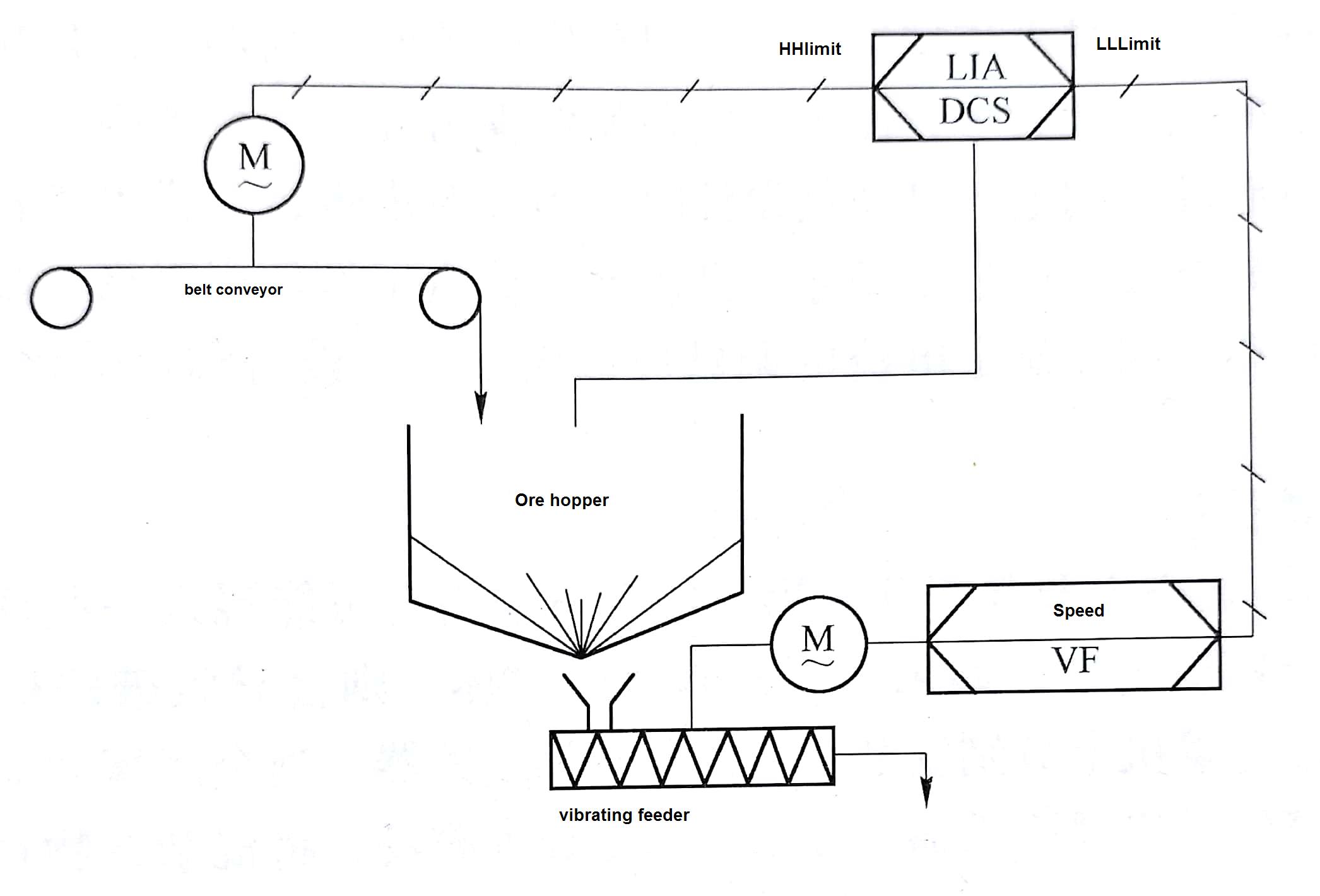
Fig2. Interlocking control of ore hopper level flowsheet
The choice of the upper and lower limits of material level is more complex, it should avoid the following:
1) The upper limit and the lower limit are too close, the range is too narrow, and the result of the control is frequent alarm, frequent adjustment of the equipment, and too much fluctuation in production. This situation is to be resolutely avoided.
2) The lower limit is set too low, which means the buffer zone between the ore and the feeder is very thin. When the ore is near the lower limit, if a large number of ore is thrown in from the feding port, it will break through the buffer area, cause direct impact on the feeding equipment, cause equipment damage or discharge port clogging, and cause production accidents or safety accidents.
When implementing interlocking control, we should carefully set the material level limit according to the production operation experience, and also divide the whole silo depth into several intervals.
(3)Belt conveyor overload protection interlocking control
Crushing production must strictly prevent the overload and stop of belt conveyors, because once the overload stops, a lot of ore will be left on the belt, so it will be very difficult for the belt to start with load. Operators often need to manually clean up, labor intensity is large, and production efficiency is low. The belt conveyer on the upper slope will also produce "ore slip" and cause safety accidents. Therefore, the overload protection of the belt conveyer is very important. In order to prevent overloading and parking of belt conveyors and maximize their operation capacity, a closed loop control is made between the working current and the speed regulating device of the front feeder of the belt feeder, and the overload control principle of the coarse crushing belt conveyor and the screening belt conveyor is shown in Figure 3. When the belt current is close to or even higher than the rated current, the frequency of the ore feeding is properly adjusted, while the current is lower than the lower load limit, then the frequency is increased, so that the belt load is always kept within the proper range.
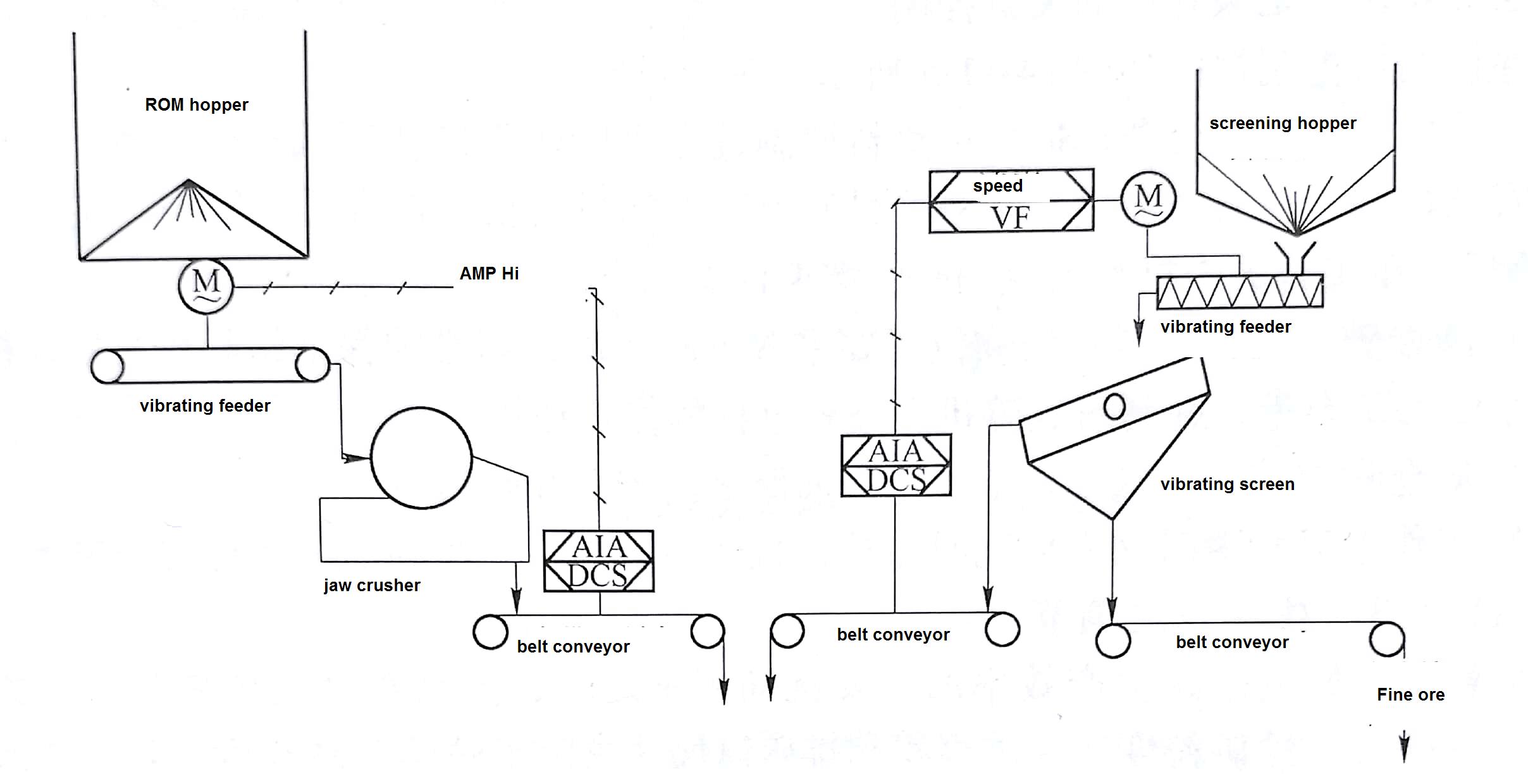
Fig3. Belt conveyer overload protection interlocking control flowsheet
Meanwhile, when designing the electrical automation of the crushing workshop, the rated current of the motor protector of the belt conveyer is carefully checked. If set too conservative, while the belt conveyer reduced work efficiency; if too aggressive, it may cause damage to the equipment. Therefore, the commissioning of the rated current should be done jointly by the engineers of technology, equipment and automation etc, which can not be dealt with simply.
(4)Others interlocking control
1)Iiron removing interlocking control.
It is possible to mix some iron materials in the run of mine. These iron materials will scratch the belt in the process of ore transportation. If entering the cavity of the crusher, it will lead to blockage or even equipment failure. Therefore, the metal detectors and iron remover are installed on the belt conveyer. When the metal detector detects the iron on the belt, the alarm signal is sent out, the iron remover is started, and the ferromagnetic impurity in the material is removed by the strong magnetic field of the iron separator.
2)belt conveyor breakdown interlocking control
Belt conveyor often appears abnormal state such as skidding, tearing, deviation and so on. It can be detected automatically by installing speed switch, tear switch, deviation switch and so on. These switch signals are linked to the belt conveyer. Once the above failure state is triggered, the belt conveyer must stop automatically and wait for manual treatment.
3)Hopper blockage interlockingcontrol
The blockage of the lower feed port is a frequent breakdown of the production, mainly due to the uneven grain size of the ore, the ore bearing mud or the hydrated ore forming stone slab. The blockage of the feeding port results in the interruption of the ore supply and subsequent production. Therefore, it is necessary to install the microwave material flow switch at the discharge port, timely detect the blockage fault and deal with it in time, so as not to build up the time to stop.
2.Ore feeding process control of crushing and screening
The most important thing in crushing production is the feeding control of the crusher, which is directly related to the working efficiency and handling capacity of the crusher. As shown in Figure 4, the impact of the cone crusher on the ore is caused by the relative motion of the moving cone and the fixed cone to achieve the purpose of crushing the ore. The upper end of the cone crusher has a small feed bin, which has enough storage material to fill the gap between the moving cone and the fixed cone, and the relative movement of the moving cone and the fixed cone can fully crush the ore. Therefore, how to control the feeding equipment of the crusher to ensure the material level of the crusher's own hopper is the key control of the crusher.
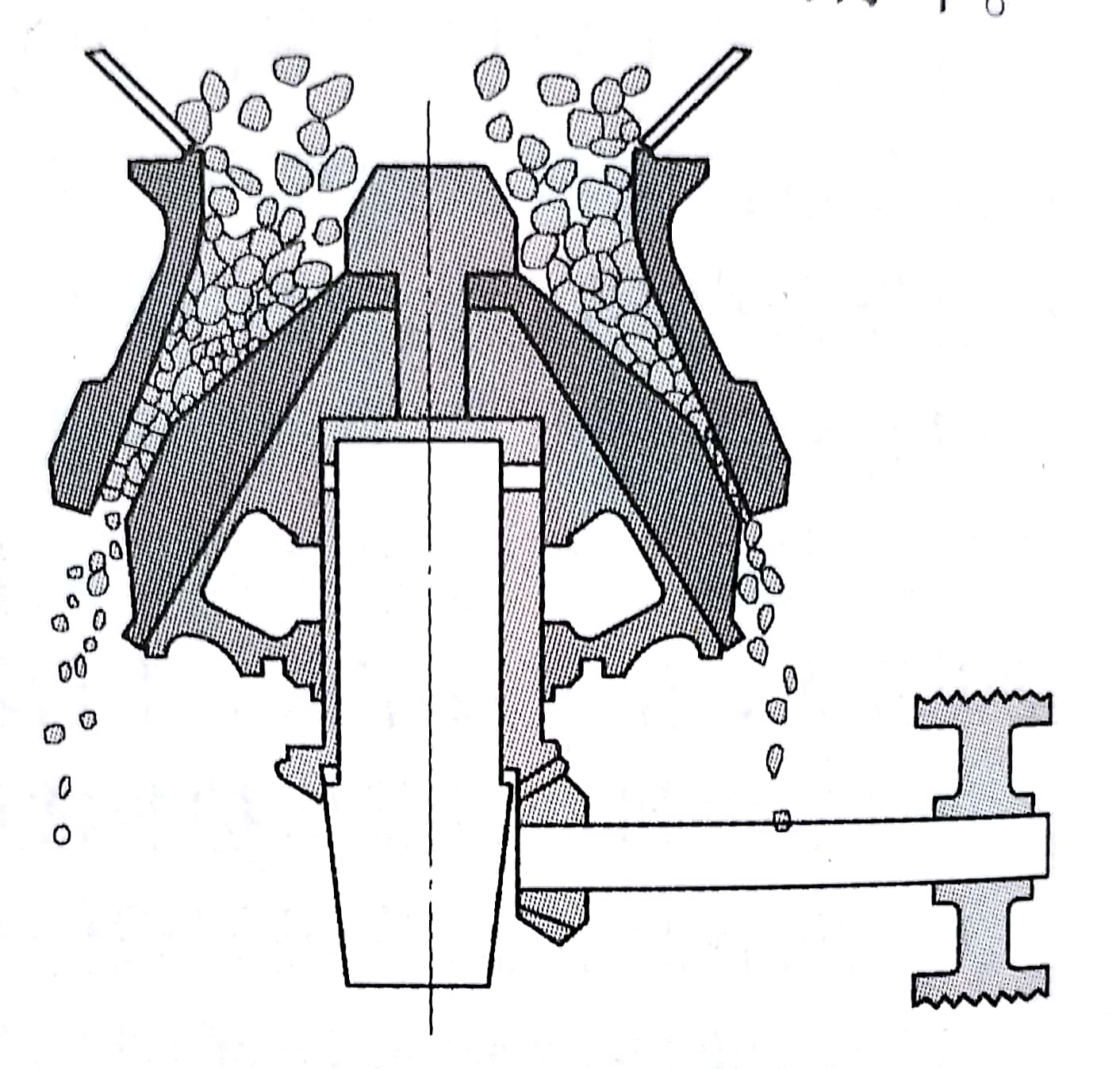
Fig4.Working principle of cone cruser
The feeding control process of the crusher is shown in Figure 5. The control of the cone crusher is the first thing to ensure that the cone crusher can not be overloaded, that is, the safety control of the cone crusher. Under the condition of safety, the feeder can be adjusted to ensure the "filling and feeding control" in the appropriate range. In the implementation of the crusher feed control, it need to pay attention to the following.
(1) The material level of the cone crusher with its own hopper needs to be controlled by the lower limit. It is necessary to ensure that the ore zone with a certain thickness between the feeder and the crusher will play a protective role in the crusher and the crushing process.
(2)The coordination between the control of the hopper material level and the feed control loop of the crusher needs to be coordinated.
(3) The working current and instantaneous power should be monitored at the same time as a prerequisite for the operation of the crushing control circuit.
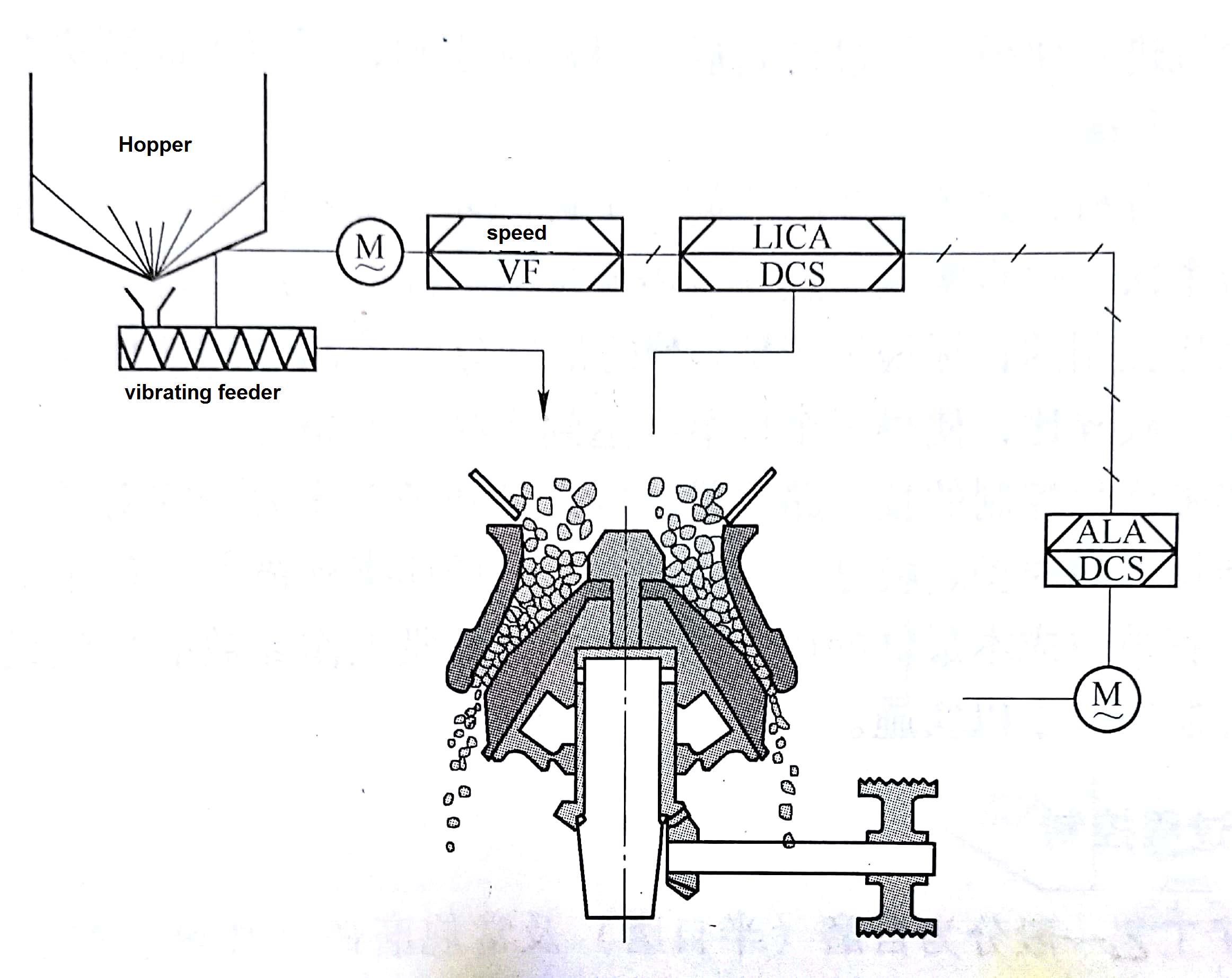
Fig5.Feeding control of cone crusherflowsheet
3.Crushing sizing adjusting control
The granularity of ore feeding is one of the main disturbance factors affecting the efficiency of crushing production, and the grain size of the product is the key index of the crushing production. For the crusher, the size of the crushing product is determined by the size of the granularity, the volume of the cavity and the size of the ore outlet. It is the most important work of the production operator to observe the grain size of the crushing product on the belt conveyor and adjust the size of the crusher.
As shown in Figure 6, the ore granularity image analysis system can identify the ore size distribution on the belt on line. If we configure the remote control interface ASRi for cone crusher, we can monitor product granularity and adjust the size of the ore drain online in the control room, which can greatly improve the regulation effect and reduce labor intensity.
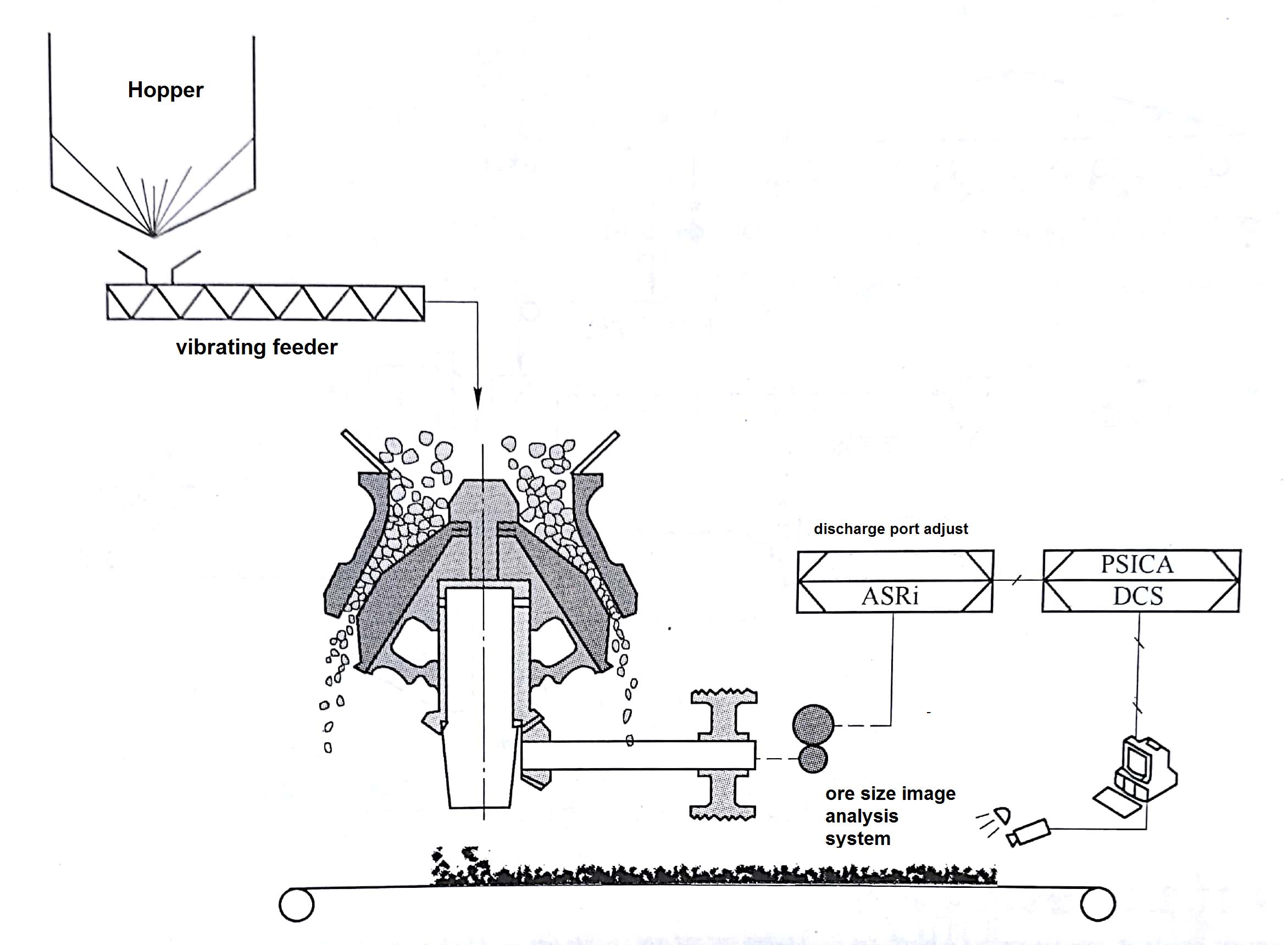
Fig6. ore granularity image analysis system
Because there is no obvious linear relationship between the size of ore feed, the size of the ore outlet and the particle size of the product, the particle size adjustment loop in Figure 6 can not be carried out according to the general closed loop feedback control. It is better to model the crusher according to the classification data of the beneficiation process test. After simulation, the control principle is obtained. Then the computer system is implanted into the system.
From the point of view of system, Sinonine know that any control link of crushing and screening production can not simply exist independently, but needs to coordinate, distinguish between primary and secondary, and gradually implement. This need to be explored in practice according to the actual production process and equipment.
The goal of optimal control of crushing process is the best allocation control of production load, that is to say, how to set up the treatment volume and crushing ratio of coarse crushing, middle crushing and fine crushing, so that the three links can achieve minimum product volume and minimum energy consumption when the product size index is achieved.
Related you may like:
---Grinding and classifing automatic control
---General layout of mineral processing plant
---Dewatering workshop arrangement
---Gravity separation workshop arrangement
---Magnetic separation workshop arrangement
---Ore washing process and workshop configuration
---Crushing and screening plant layout design
---Ball mill and flotation machine workshop arrangement
---The new way mineral processing of Graphite ore
---Structure and features of vibrating screen
---Structure of overflow ball mill and rod mill
---Grinding ball mill structure
---beneficiation experiment- ore sampling
---Mineral magnetic separation